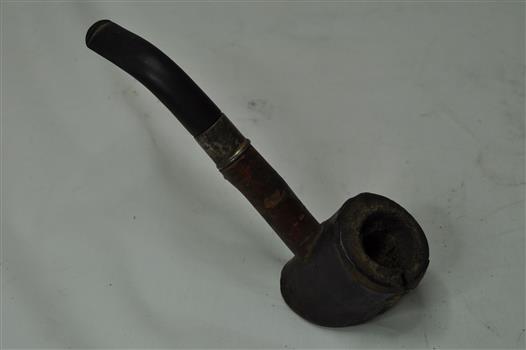Historical information
Pipe smoking has been in vogue for centuries, and in Australia it was a symbol of the "discerning smoker" such as the landed gentry or men of professional status. This pipe, of the cherrywood style, would have suited the young professional of the mid and late 1900s. It is the type of pipe well suited to the rural backdrop. In the late 1900s, with the health related restrictions placed on public smoking, these tobacco pipes were not immune from the legislation, and even though the pipe smoke was not as offensive as cigarette smoke it still came under the umbrella of smoking. Pipes were also used in the process of inhaling illicit drugs i.e. marijuana, but this use was limited to a very few. Smoking in the second millennium is being phased out as a social habit in Australia but may affect the few "private" smoker and has, as the United States prohibition era (alcoholic drinks) did, spawn an illicit trade in cheap contraband tobacco.
Significance
This type of pipe lends itself well to the rural setting of the Kiewa Valley and although it is a bit more bulky in shape its wooden barrel blends into the environment. The Kiewa Valley region was up until the late 1900s part of the Australian Tobacco Industry and the levels of men smoking pipes was enhanced by the readily supply from "off the fields", of tobacco leaves.
Physical description
This pipe has a bent stem and its style is cherrywood. The pipe has a permanent filter and a narrow tin band. The bowl is well pronounced (curved both top and bottom). The stem screws into the bowl , mid way up the bowl (similar to KVHS 0423 and KVHS.0425 and the stem is also made from bakelite (dark brown in colour). This stem is the same length as KVHS 0425 but the bit (mouth piece) has a gentler curve.






